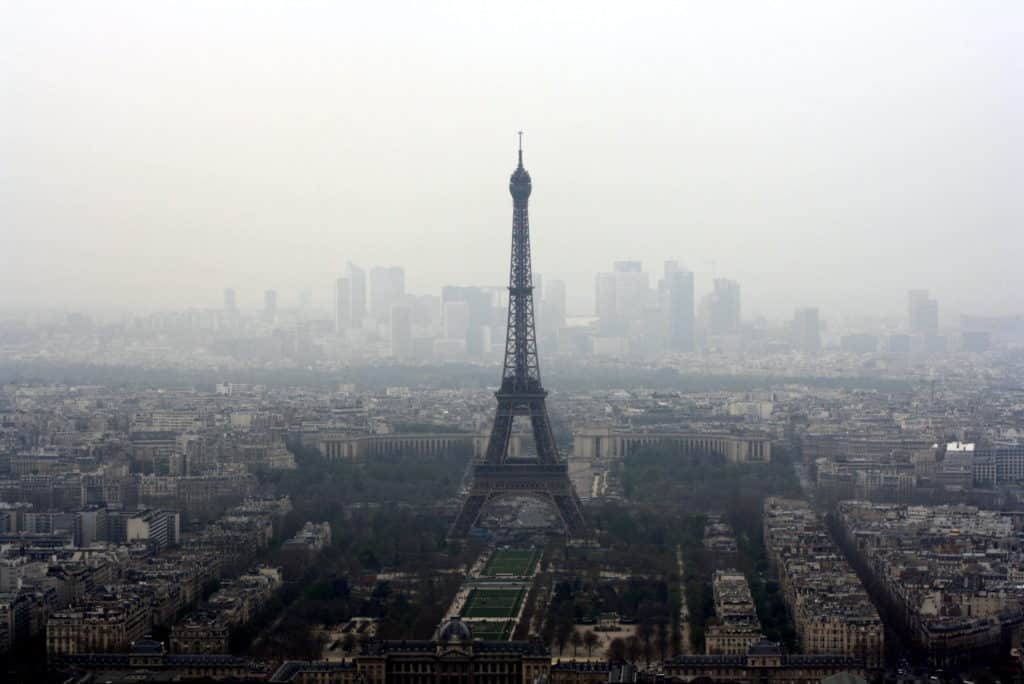Half a million deaths in the European Union in 2021 were linked to exposure to toxic air pollutants such as fine particulate matter, nitrogen dioxide, and ozone.
—
More than half a million people living in the European Union died from health issues directly linked to toxic pollutants exposure in 2021, as concentrations remained well above internationally-recognised safe levels, a new study has found.
New data on 41 European countries published by the European Environment Agency (EEA) last week suggests that stricter air quality regulations could have prevented about half of these deaths, most of which – about 293,000 – were linked to exposure to fine particulate matter (PM2.5) above World Health Organization’s (WHO) guideline level of 5 µg/m3. PM2.5, an atmospheric particulate matter that has a diameter of less than 2.5 micrometers – or about 3% the diameter of a human hair – is said to pose the greatest risk to human health. Emissions from combustion of gasoline, oil, diesel fuel, or wood produce much of the PM2.5 pollution found in outdoor air.
Concentrations above WHO’s guideline level of 10 µg/m3 of nitrogen dioxide (NO2), mainly deriving from cars and trucks as a byproduct of fossil fuel combustion, were responsible for approximately 69,000 deaths, while concentrations above 70 µg/m3 of ozone (O3), a gas that forms above the Earth’s surface considered extremely threatening to human health, killed another 27,000 people.
Following research showing fine particulate matter to be more harmful than previously thought and associated with 8.7 million deaths every year – nearly 20% of global deaths – the WHO issued new stringent guidelines in September 2021, slashing the new acceptable limit for PM2.5 by half and lowering that of nitrogen dioxide by 75%. According to the UN body, if the world collectively reduced its air pollution levels to within the new limits, nearly 80% of global air pollution-related deaths could be prevented.
Nevertheless, a survey of pollution data in 6,375 cities across the world conducted shortly after WHO introduced the new guidelines showed that only 3.4% of the surveyed cities met the standard in 2021, while as many as 93 cities saw PM2.5 levels at 10 times the recommended level. Earlier this year, a new study revealed that air pollution levels exceed safe values set by the WHO almost everywhere in the world, with only 0.18% of the global land area and only 0.001% of the world’s population experiencing an annual exposure to PM2.5 below the safe threshold of 5 μg/m3.
You might also like: 4 Causes and Effects of Air Pollution
| Pollutant | 2021 AQGs |
| Fine particulate matter, µg/m3 | Annual: 5 24-hour: 15 |
| Ozone, µg/m3 | 8-hour: 100 |
| Nitrogen dioxide, µg/m3 | Annual: 25 24-hour: 40 |
In Europe, most urban areas still experience levels of air pollutants much higher than European and international standards. This is despite overall improvements in air quality, with the number of deaths attributable to PM2.5 falling by 41% between 2005 and 2021.

According to the EEA, in 2021, 97% of the bloc’s urban population was exposed to high levels of PM2.5, with central-eastern Europe and Italy reporting the highest concentrations, primarily due to the burning of soil fuels for domestic heating and industrial purposes. Ozone and nitrogen dioxide levels were also above the WHO health-based guideline level.
You might also like: Air Pollution: Have We Reached the Point of No Return?


















